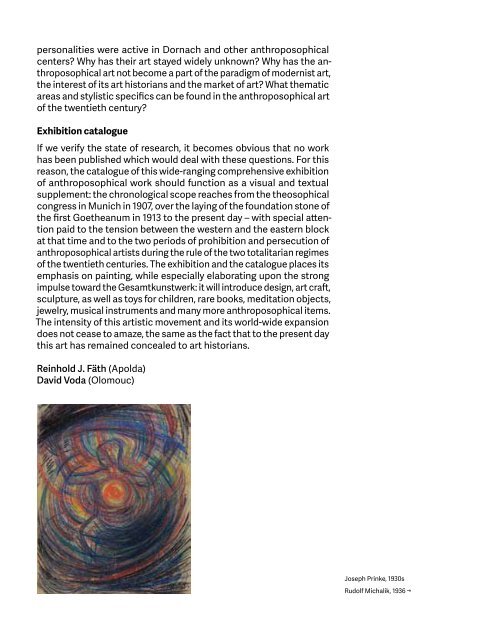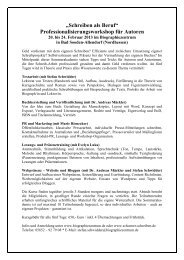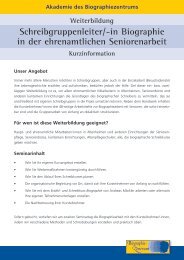AENIGMA_expose_2013
AENIGMA_expose_2013
AENIGMA_expose_2013
Erfolgreiche ePaper selbst erstellen
Machen Sie aus Ihren PDF Publikationen ein blätterbares Flipbook mit unserer einzigartigen Google optimierten e-Paper Software.
personalities were active in Dornach and other anthroposophical<br />
centers? Why has their art stayed widely unknown? Why has the anthroposophical<br />
art not become a part of the paradigm of modernist art,<br />
the interest of its art historians and the market of art? What thematic<br />
areas and stylistic specifics can be found in the anthroposophical art<br />
of the twentieth century?<br />
Exhibition catalogue<br />
If we verify the state of research, it becomes obvious that no work<br />
has been published which would deal with these questions. For this<br />
reason, the catalogue of this wide-ranging comprehensive exhibition<br />
of anthroposophical work should function as a visual and textual<br />
supplement: the chronological scope reaches from the theosophical<br />
congress in Munich in 1907, over the laying of the foundation stone of<br />
the first Goetheanum in 1913 to the present day – with special attention<br />
paid to the tension between the western and the eastern block<br />
at that time and to the two periods of prohibition and persecution of<br />
anthroposophical artists during the rule of the two totalitarian regimes<br />
of the twentieth centuries. The exhibition and the catalogue places its<br />
emphasis on painting, while especially elaborating upon the strong<br />
impulse toward the Gesamtkunstwerk: it will introduce design, art craft,<br />
sculpture, as well as toys for children, rare books, meditation objects,<br />
jewelry, musical instruments and many more anthroposophical items.<br />
The intensity of this artistic movement and its world-wide expansion<br />
does not cease to amaze, the same as the fact that to the present day<br />
this art has remained concealed to art historians.<br />
Reinhold J. Fäth (Apolda)<br />
David Voda (Olomouc)<br />
Joseph Prinke, 1930s<br />
Rudolf Michalik, 1936 q








